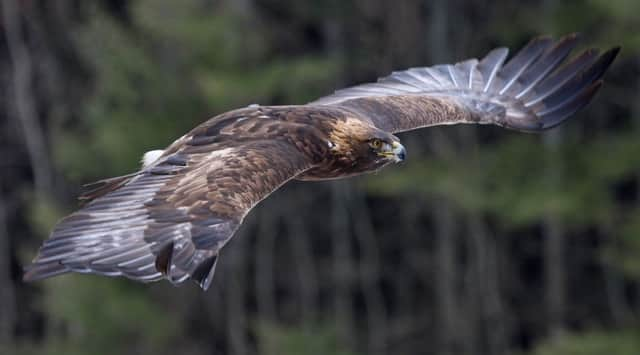DNA to be used in tracking wildlife criminals


The fight against wildlife crime is to be boosted by new technology that enables human DNA to be retrieved from the scene days after the offence has been committed.
State-of-the-art techniques which are already used to tackle crimes from housebreaking to murder are being adapted to tackle illegal activity in the countryside, in particular the illegal persecution of birds of prey.
Advertisement
Hide AdAdvertisement
Hide AdThe research is being carried out the Partnership for Action Against Wildlife Crime (PAW) Scotland with the Scottish Police Authority (SPA) Forensic Services in partnership with the Scottish Government and Strathclyde University.
The new techniques enable DNA to be traced on illegal traps that have been outside for at least ten days. DNA can also be traced on rabbit baits and bird carcasses at crime scenes after at least 24 hours.
Environment Secretary Roseanna Cunningham, who is also chairwoman of PAW Scotland, said: “Poisoning, trapping and shooting are all methods used to illegally target birds of prey, however investigations can often be hampered by a lack of evidence.
“This new research will unlock the potential of using DNA profiles to track criminals and could play a crucial role in helping secure convictions for wildlife crime.
“We continue to prioritise wildlife crime and are working to develop new ways to protect our precious birds of prey, including through a new wildlife crime detective post at Police Scotland HQ and a new team of special constables to tackle rural crime in the Cairngorms National Park.”
Steven Ferguson, lead forensic scientist at SPA Forensic Services, said: “This exciting research in support of tackling wildlife crime demonstrates that DNA profiles can be obtained from items exposed to the elements in Scotland’s sometimes harsh climate.
“In recent years, over £6 million has been invested in new forensic capability in Scotland including DNA24, robotics and powerful software to successfully obtain DNA profiles in support of the Scottish justice system.
“The research undertaken by PAW has demonstrated that these same techniques, used in crimes ranging from housebreaking to murder, can also be used to identify those involved in persecuting birds of prey.”
Advertisement
Hide AdAdvertisement
Hide AdDetective Chief Superintendent David McLaren said: “The illegal use of traps are often used in remote places. This makes the collection of evidence extremely challenging.
“This new technique will advance our ability to collect Human DNA from illegally set traps.”